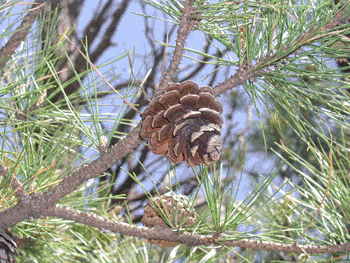 Native Pinelands plants
Native Pinelands plants
Your Yard Can Enhance the Pinelands Environment
Rain Gardens
Helpful Resources
Featuring a mosaic of dense forests, serene rivers and marshes, expansive farms, and scenic towns, the New Jersey Pinelands is the largest area of open space on the mid-Atlantic seaboard. The 1.1-million-acre region covers 22 percent of the state, and teems with a diverse population of plants and animals, including some that are found nowhere else on Earth. Officials adopted federal and state laws in 1978 and 1979 that designated the Pinelands as the nation's first National Reserve and affords special protection to the area's natural, cultural and historic resources. You can play a vital role in helping to safeguard these natural treasures.
Pinelands soil and water are naturally highly acidic and low in nutrients. Native plants and animals are well-adapted to these conditions.
To protect these resources, it's important to avoid adding nutrients by using fertilizers or neutralizing soil acidity by adding lime. Fertilizer and lime disrupt the conditions native plants and animals need to thrive. Adding such chemicals can invite non-native and often invasive species to move in. Fertilizers and pesticides can easily pass through the region's porous, sandy soils and be carried into and contaminate the ground water.
Your Yard Can Enhance the Pinelands Environment
Conserve and Protect Water: By reducing impervious surfaces, more water will penetrate the ground and replenish ground water. Eliminate the use of pesticides, herbicides, and fertilizers, and properly dispose of pet waste to reduce the amount of contaminants that infiltrate the soil and enter the ground water.
Preserve and Maintain Biodiversity: Preserve natural habitat to provide food, water and shelter that local and migrating animals need to survive. You can attract and provide refuge for birds, butterflies, and other wildlife by landscaping your yard with native plants. Plants that grow to varied heights support a greater diversity of birds and other animals by providing layers of shelter. These steps will make your yard part of the surrounding ecosystem.
Work with Natural Resources: Learning about your yard's soil structure and chemical composition can help you save valuable maintenance time, energy, and money. Test your soil and plant native vegetation. Many Pinelands plants tend to be drought-tolerant and require less water and little or no fertilization. Use mulch to retain soil moisture, reduce water consumption and discourage weed growth. Only amend the soil in targeted areas, such as vegetable gardens, and use organic compost.
Rain Gardens
The Pinelands Commission has created a new webpage to highlight the purpose and benefits of rain gardens. To view the webpage, please click here.
Helpful Resources
Living and Landscaping In New Jersey's Pinelands Information for Homeowners and Realtors
Landscaping With Native Pinelands Plants
Native Pinelands Plants for the Landscape
Native Plant Society of New Jersey
Rutgers New Jersey Agricultural Experiment Station
 Native Pinelands plants
Native Pinelands plants




